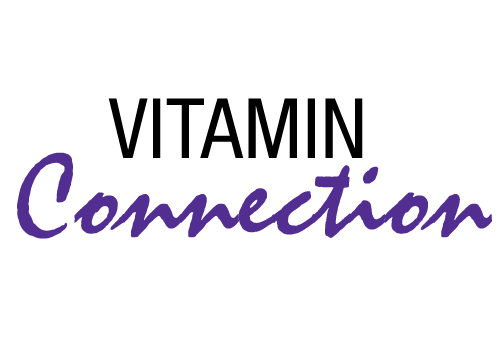In mid-April, the U.S. Food and Drug Administration (FDA) “urged” the addition of selenium as a required nutrient in infant formulas. Selenium has been known to be an essential nutrient for humans since Dr. J.T. Rotruck et al., discovered in 1973 that it is a component of a key body compound. However, research into the roles of selenium in the body continues to grow. Nearly every week, a new study is published elucidating one or more biochemical pathways in which selenium compounds in the body are vital to human health.
While this is good news, I find it more than disturbing that a few researchers new to the field do not seem to know about much of the older research. This occasionally leads to the problem wherein a scientist reports a good finding, but also notices that an obscure biomarker seems to have changed and then the scientist issues a warning that selenium MAY do this or that and that more research is needed. In the meantime, the public is warned not to take selenium supplements until this diversion is researched. Yet, the research has already been done and selenium has already been shown not to cause the imagined problem such as possible negative influence on diabetes or whatever. Usually, the opposite was previously elucidated and selenium was found to be beneficial.
This month, I am once again calling upon one of the few major selenium research pioneers, Gerhard Schrauzer, Ph.D., to discuss his perspective on selenium’s role of being an essential nutrient and the latest research findings on selenium.
Dr. Schrauzer is a professor emeritus (University of California, San Diego [UCSD]), researcher, inventor and author, is the director of the San Diego-based Biological Trace Element Research Institute and the founder and editor-in-chief of the noted international journal Biological Trace Element Research. He studied chemistry at the University of Munich, where he received his Ph.D. with summa cum laude in 1956 and became a member of its science faculty in 1963. He came to the United States in 1964 and in 1966, accepted a position as tenured full professor at UCSD, where he remained until his retirement in 1994. In addition, he held visiting professorships at the University of Nanjing, China, the University of Osaka, and the School of Medicine, University of Occupational and Environmental Health, Kitakyushu, Japan. In 1997, he was named honorary professor at Xi’an Medical University. He is a member of the American Association for Cancer Research, the American Institute of Nutrition, the American College of Nutrition, the American College of Toxicology, the Association of Clinical Scientists, the American Chemical Society and a number of other prestigious organizations. He has published more than 300 papers and reviews in national and international journals and authored or edited five books.
Dr. Schrauzer is internationally known and recognized for his work on vitamins and trace minerals. He pioneered the study of selenium’s biological functions, especially in relation to its cancer-protective properties. In 1994, he received the Sir Frank Macfarlane Burnet Commemorative Award for Clinical Tumor Immunology.
Passwater: Selenium is an essential nutrient. It is needed by growing fetuses as well as older adults. It is good that selenium may soon be required in infant formulas—especially if food forms of selenium are used rather than simple inorganic forms. This will give manufacturers a chance to differentiate their products according to selenium effectiveness. Selenium is needed in the very young to properly develop the thyroid, brain and muscles, as well as protect every organ in the body from oxidative stress.
Dr. Schrauzer, for those readers who have not followed selenium nutrition, please briefly explain why selenium is an essential nutrient.
Schrauzer: Selenium is a rare element. It is only about as abundant as silver. As it is unevenly distributed on the Earth’s crust, the soils contain too little of the element in many parts of the world. What renders selenium unique are its powerful catalytic properties, and these caused it to be used by living systems already during the earliest phases of evolution. Selenium, in the form of the amino acid selenocysteine, is present as the functional component of many enzymes. These enzymes, also known as selenoproteins, are so important for the maintenance of life that the need for them is specifically encrypted in the genomes of all higher animals and humans.
Passwater: What functions do these selenoproteins have and what are their effects on human health?
Schrauzer: During aerobic metabolism, reactive oxygen species are generated that may give rise to the formation of hydrogen peroxide and of lipid hydroperoxides. These may decompose to yield hydroxyl radicals, which are mutagenic and destructive to all organic cellular components. A group of selenoenzymes, the glutathione peroxidases, reduce hydrogen peroxide and lipid hydroperoxides to water and harmless lipid alcohols before they can do any damage. All authorities agree that the protection of our organs and tissues from peroxidative damage is of key importance for the maintenance of health and the proper functioning of all our organs. Other selenoproteins, the thyronine deiodases, for example, convert the inactive thyroid hormone precursor tetraiodo-thyronine, into tri-iodo-thyronine and act as regulators of thyroid hormone function. But these are by no means all of the functions of selenium. It is also needed for the proper functioning of the immune system, reproduction and brain function, for example. It is imperative, therefore, that we obtain enough selenium with our food every day.
Passwater: Researchers Drs. Joyce McCann and Bruce Ames emphasize that ensuring adequate intakes of selenium may reduce the risk of age-related diseases such as cancer and heart disease, and they suggest that the current RDA for selenium of 55 mcg/day should be increased to 75 mcg/day (1). Any comments?
Schrauzer: It is good that it was published, if only because the importance of selenium for the maintenance of health cannot be emphasized often enough and also because the authors proposed an increase of the current recommended dietary allowance (RDA) for selenium. An upward revision of this RDA is long overdue, since the current value dates back to the time when glutathione peroxidase was the only selenoenzyme known. By now, selenoenzymes number about 30, and additional ones are still likely to be discovered. However, in my opinion, an increase of the RDA to 75 mcg selenium/day would still not be quite sufficient to allow the body to build and to maintain adequate selenium reserves and to fully utilize its protective functions.
Passwater: Could you please elaborate this point?
Schrauzer: First, we need to remind ourselves that selenium is a dynamic element that undergoes numerous chemical changes from the time it is absorbed and until it is excreted. At minimum, we must take in the same amount of selenium to replenish the amount we excrete, plus a little extra, if we wish to build up selenium reserves in our bodies. At an intake of 75 mcg selenium/day, this is barely possible.
Studies with North American adults consuming self-selected diets revealed that men needed 80 mcg of selenium per day to stay in balance, while women needed only 57 mcg each day. However, this apparent gender difference disappeared when adjusted for differences in body weight. Evidently, the proposed RDA increase to 75 mcg/day would not be quite sufficient to keep an average-sized adult male’s selenium needs in balance.
Passwater: If we take in less selenium than needed to stay in balance, what will be the consequences?
Schrauzer: Our selenium balance will become negative; we will excrete more selenium than we take in. This will cause organs and tissues to gradually become selenium depleted, thereby increasing the risks of developing chronic diseases.
Passwater: Nevertheless, even today, some scientists advise people not to take selenium supplements, claiming selenium may increase the risk of developing type-2 diabetes.
Schrauzer: The selenium–diabetes claim that was made in 2007 has since been discounted. It was poorly supported to begin with, but is, unfortunately, still in the information pipeline. It was based on research results indicating that the plasma selenium levels of diabetics tend to be higher than those of healthy people. However, this is due to disease-related changes of the plasma proteins of diabetics, and not because the selenium caused the diabetes. Newer research results, such as published in 2010 BioMed Central’s open-access journal Nutrition and Metabolism, showed that selenium may actually protect against diabetes development.
Passwater: Obviously, if there was a problem, it would be seen in the countries having high selenium intakes. Yet, the opposite is true. These countries tend to have low incidences of type-2 diabetes.
At the April 9th annual meeting of the American Association of Cancer Research, in Washington, D.C., an interesting report was given by Milan Geybels, M.Sc., of Maastricht University in Maastricht, the Netherlands. He reported that among a group of almost 60,000 men aged 55–69 at the beginning of the study, those with the highest selenium levels had more than a 60% reduced risk for advanced prostate cancer. That’s impressive.
Schrauzer: During the discussion of this study at this meeting, researchers at the M.D. Anderson Cancer Center in Houston warned men not to take supplemental selenium, as “taking too much selenium can be toxic.”
Passwater: How much selenium can be taken safely, and at what dosage would one have to worry about toxicity?
Schrauzer: Taking an extra 100–200 mcg of selenium per day in supplement form is perfectly safe. In fact, selenium intakes of 400 mcg/day were determined to be the maximal safe intake, and intakes of 750–800 mcg/day were proposed as the “upper limit of the safe dietary selenium intake.” At this point, it also must be mentioned that even higher selenium intakes may be well tolerated for extended periods by Americans, as long as their diets provide enough protein.
Passwater: Can you please elaborate this point further?
Schrauzer: The toxic effects of selenium are markedly reduced by dietary protein. Rats, for example, tolerated feed containing 35 ppm of selenium (as selenite) when maintained on feed with a casein content of 35%. The protecting effect of casein is attributable primarily to its high content of sulfur-containing amino acids. In adults residing in high-selenium regions of the United States, the first reversible toxicity symptoms appeared after consuming a diet providing 2,400–3,000 mcg of selenium per day for several months.
Passwater: Can diets alone provide enough selenium, say 200–300 mcg per day?
Schrauzer: This can be accomplished by consuming diets rich in whole-grain cereals and seafoods.
Passwater: For people wishing to take selenium in a supplement, what form do you recommend?
Schrauzer: Preferably, selenium should be taken in the same form or forms that occur in foods. As the soils in most U.S. regions are not selenium deficient, whole-grain cereals are good sources of the element.
Passwater: Dr. Schrauzer, thank you for chatting with us once again about the need for selenium. WF
Reference
1. J.C. McCann and B.N. Ames, “Adaptive Dysfunction of Selenoproteins from the Perspective of the Triage Theory: Why Modest Selenium Deficiency May Increase Risk of Diseases of Aging,” FASEB J., Mar. 14, 2011.
Dr. Richard Passwater is the author of more than 40 books and 500 articles on nutrition. Dr. Passwater has been WholeFoods Magazine’s science editor and author of this column since 1984. More information is available on his Web site, www.drpasswater.com.
Published in WholeFoods Magazine, June 2013










